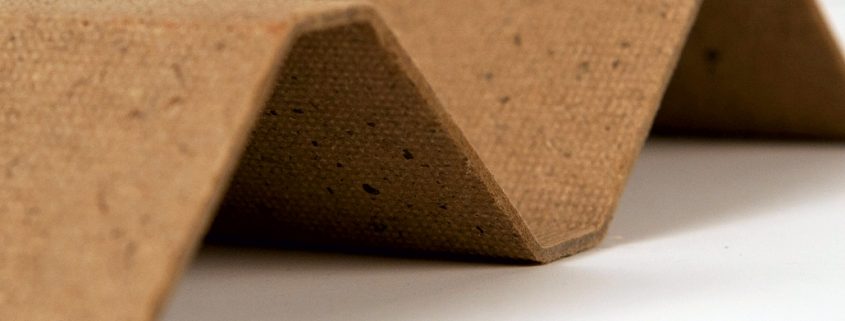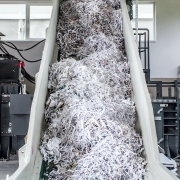Converting Old Fibers into Composite Panels
Since spring this year the Netherlands-based paper manufacturer Van Houtum produces composite panels, made from recycled waste resources ranging from paper and agricultural waste, to textiles and even beverage cups as a raw material feedstock. As of 2018, the planned large scale production facility is scheduled to enter into operation – alongside the current paper mill.
For this purpose the company will invest several million Euro in a joint venture with US-based company Noble Environmental Technologies. According to media reports, the “Ecor” panels that will be manufactured by the joint venture with Noble Environmental Technologies are seen as an alternative to materials like MDF (medium density fiberboard) or chipboard, both in manufacturing process and chemical composition. As reported, the Ecor manufacturing process binds the cellulose fibers to each other, without the use of toxic glues and resins, using only water, heat and pressure. The panels produced in various thicknesses could be used for anything to make anything including wall and ceiling tiles, furniture, print and packaging. The raw material that will be used to make the panels will be sourced from regional enterprises and institutions, including the Amsterdam Schiphol Airport, recycling centers and manufacturing organizations. In a newspaper report it was stated that many companies regularly produce cellulose fiber waste and are looking for a circular economy solution to recycle and re-use this waste.
Ecor is a composite panel formed from the conversion of abundant cellulose fiber, pressure, and heat. Fibers are sourced from old corrugated cardboard, old news print, office waste, forest waste, agricultural fiber, and even bovine process fiber. Ecor is 100 percent bio-based, 100 percent comprised of recycled waste materials, 100 percent recyclable, and is cradle-to-cradle compliant, Noble Environmental Technologies emphasized. According to the information, Ecor is available in a wide range of configurations from single and multi-ply panels to a versatile range of three-dimensional assemblies. The panels are also available in a variety of colors and with several treatments to enhance fire, acoustic, and moisture performance.
Noble Environmental Technologies
The company, headquartered in San Diego (California), was founded in 2005 and developed Ecor in conjunction with the US Department of Agriculture. After almost a decade of product, process, equipment, and organizational development, the firm opened its first large-scale Ecor production facility in Serbia in 2014 with an annual production capacity of over 4,300,000 million square feet. And there are plans to expand annual production output to over 32,000,000 square feet. The planned expanded production capacity capitalizes on what the company has learned in operating the Serbia facility and as a result incorporates several cost saving and productivity enhancing features that result in shorter production cycle times, higher and more consistent quality, and substantially lower direct costs. Over the past few years, subsidiaries and affiliates in Serbia (Noble Environmental Serbia, NES), The Netherlands (Noble Environmental Benelux, NEBL), Turkey (Noble Environmental Turkey, NETR) were established. As reported, Noble Environmental Technologies is in discussions to open additional production facilities and R&D facilities in Europe, the United States and Mexico.
Photo: Ecor
GR 22017








